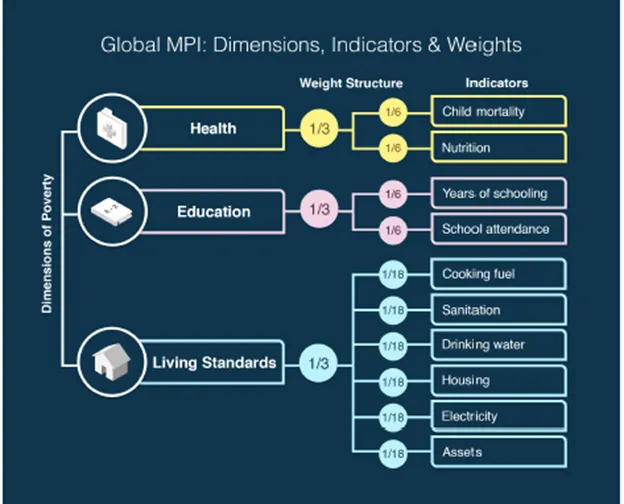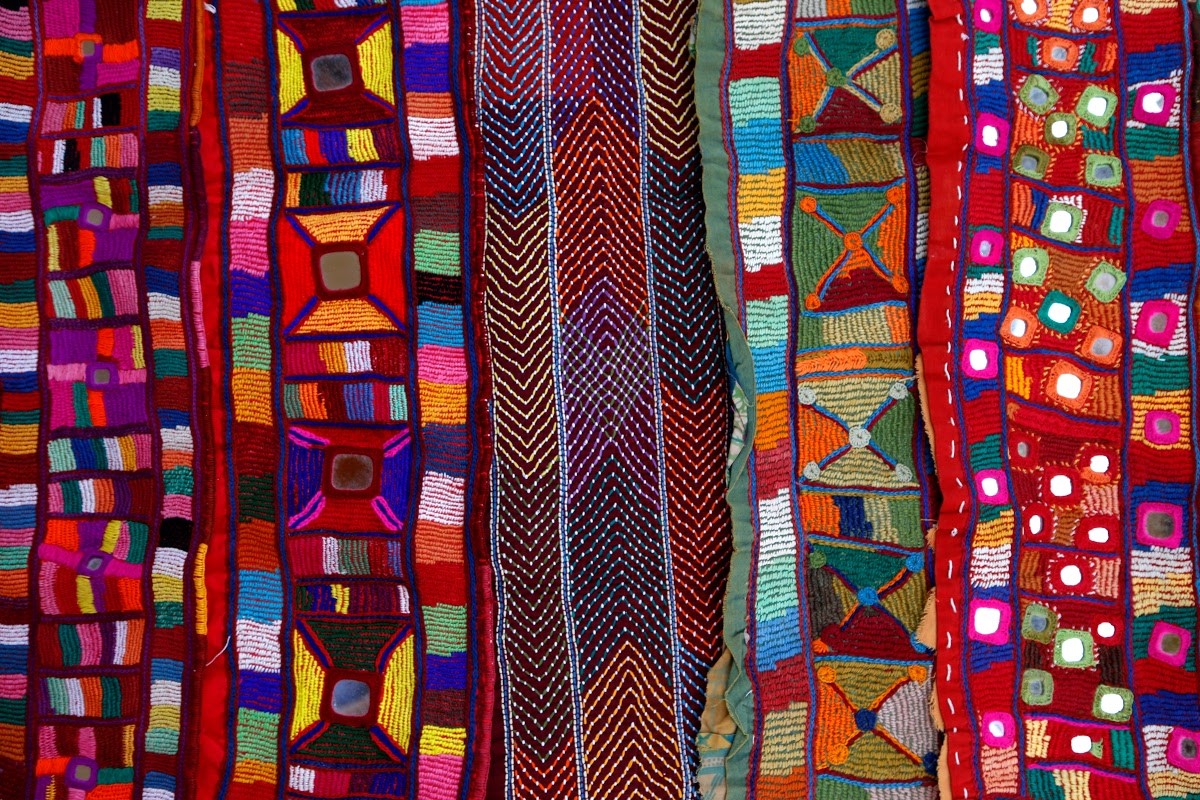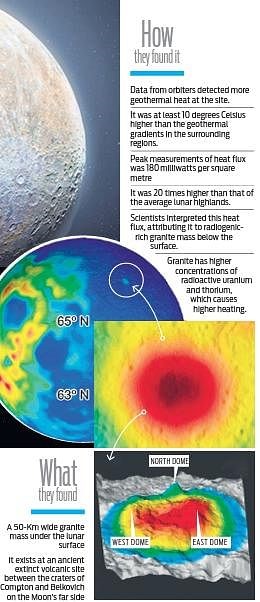UN’s Multidimensional Poverty Index
Some 415 million Indians escaped poverty between 2005-06 and 2019-21, according to the latest Multidimensional Poverty Index (MPI) highlighting the remarkable achievement by India.
- It is an international index released annually by United Nations.
- The index reflects the multiple deprivations that poor people face in the areas of education, health, and living standards.
- Released by –UN Development Programme (UNDP) and the Oxford Poverty and Human Development Initiative (OPHI) since 2010.
- Indicators

- Report Findings – India - According to it, India has pulled 415 million Indians out of poverty between 2005-06 and 2019-21 with incidence falling from 55.1% to 16.4%.
|
Indicators
|
Declining Percentage
|
|
Nutrition indicator
|
From 44.3% to 11.8%
|
|
Child mortality
|
From 4.5% to 1.5%
|
|
Cooking fuel
|
From 52.9% to 13.9%
|
|
Sanitation
|
From 50.4% to 11.3%
|
|
Drinking water
|
From 16.4% to 2.7%
|
|
Electricity
|
From 29% to 2.1%
|
|
Housing
|
From 44.9% to 13.6%
|
- Global Values
- According to the report, 1.1 billion out of 6.1 billion people live in acute multidimensional poverty across 110 countries.
- Sub-Saharan Africa and South Asia are home to approximately five out of every six poor people.
- Children under the age of 18 account for half of MPI-poor people (566 million).
- Poverty predominantly affects rural areas, with 84% of all poor people living in rural areas.
- As per data collected in 2021/2022, some countries like Mexico, Madagascar, Cambodia, Peru, and Nigeria have persisted a momentum on poverty reduction even during the pandemic.
- 25 countries along with India, Cambodia, China, Congo, Honduras, Indonesia, Morocco, Serbia, and Vietnam have halved their MPI values.
References
1. The Hindu | 415 million Indians came out of multidimensional poverty
2. Down to Earth | India lifted 415 million people out of poverty
Director of Enforcement Directorate
The Supreme Court quashed the Centre's order of granting third extension to Enforcement Directorate director Sanjay Kumar Mishra.
Enforcement Directorate
- It is a premier financial investigation agency of the Government of India.
- The Directorate of Enforcement was established in the year 1956 with its Headquarters at New Delhi
- Ministry - It is part of the Ministry of Finance.
- The Directorate of Enforcement is a multi-disciplinary organization mandated with investigation of offence of money laundering and violations of foreign exchange laws.
- It is composed of IAS, IPS and IRS officers, and also officers promoted from ED's own cadre.
- Functions - The statutory functions of the Directorate include enforcement of following Acts
- The Prevention of Money Laundering Act, 2002 (PMLA)
- The Foreign Exchange Management Act, 1999 (FEMA)
- The Fugitive Economic Offenders Act, 2018 (FEOA)
- It is also a sponsoring agency under Conservation of Foreign Exchange and Prevention of Smuggling Activities Act, 1974 (COFEPOSA).
Director of Enforcement Directorate
- The ED director is appointed as per provisions of the Central Vigilance Commission Act, 2003.
- The director of enforcement directorate is appointed by the central government.
- Appointment Committee - The Centre appoints the director on recommendation of a high level committee.
- Term - CBI and ED chiefs have fixed tenures of 2 years.
- Amendments enacted in 2021 to the Central Vigilance Commission Act (2003), the Delhi Special Police Establishment Act (1946) and the Fundamental Rules allow them a maximum 3 annual extensions.
High level committee and its working
- A 5-member panel composed of the Central Vigilance Commissioner (chair) and Vigilance Commissioners had to recommend appointment of the ED director.
- The same committee extends the tenure, if an ED Director was worthy of an extension in service.
- Other committee members are secretaries in the members comprising of Finance (Revenue), Home and Personnel & Training ministries.
- In case of the CBI Director, a High-Level Committee of the Prime Minister, Opposition Leader and the Chief Justice of India had to recommend.
References
- The Hindu | Supreme Court asks ED chief to quit
2. Hindustan Times | SC refuses Centre's 3rd tenure extension to ED
Underground Climate Change
Underground climate change is worrying scientists and engineers involved with aspects of urban planning as it could adversely affect the durability of structures and infrastructures in cities.
- Underground climate change – It is the impact due to rising subsurface temperatures because of human activity like basement parking, tunnel roads, subways, and underground rail, among others.
- This phenomenon is known as “underground climate change” or “subsurface heat islands”.
- It is an extension of the phenomenon of urban heat islands.
Urban heat islands are urban regions which are significantly warmer than their rural surroundings due to human activities.
- Researchers have found that the shallow subsurface beneath cities warms by 0.1 to 2.5 degrees Celsius per decade.
- Heat diffuses from buildings and underground transportation, warming the ground at an increasingly fast rate.
- The ground underneath cities absorbs and retains heat from various sources, including buildings, transport systems, industrial processes.
- It also includes waste heat from basements and other subterranean facilities.
- Over time, the accumulation of this heat can lead to an increase in subsurface temperatures.
- The heat trapped is affecting the soil by making it expand or contract.
- Threat - Underground climate change is a silent hazard, as no existing civil structure or infrastructure is designed to withstand these variations.
- Effects
- Environment and infrastructure
- This can lead to instability in building foundations, causing them to crack or move.
- It can change the characteristics of the soil and rock that affects underground water resources.
- Health and ecological impacts
- It can cause serious health implications, such as heat stroke and respiratory problems.
- Opportunity
- The heat generated can be captured and used as a source of geothermal energy.
- By harnessing this waste heat, it’s possible to reduce the impact of underground climate change while providing a sustainable source of energy.
- Measures
- To minimize heat generation in urban constructions, materials with lower thermal conductivity can be used to improve the insulation of buildings, and capturing and using the waste heat.
References
1. New Indian Express | An underground heat threat to urban structures
2. Earth | Underground climate change
Lambani Art
Lambani artisans set Guinness World Record for making highest number of embroidery patches at the G20 Culture Working Group meeting held at Bhubaneswar.
- About - Lambani embroidery is a vibrant and intricate form of textile embellishment characterized by colourful threads, mirror work, and a rich array of stitch patterns.
- It is a traditional art form of Hampi, Karnataka predominantly upheld by the skilled women of the Lambani community.
- It is practised in several villages of Karnataka such as Sandur, Keri Tanda, Mariyammanahalli, Kadirampur, Sitaram Tanda, Bijapur, and Kamalapur.
- Lambani craft tradition involves skillfully stitching together small pieces of discarded fabric to create a beautiful fabric.
- Lambani embroidery uses a total of 14 types of stitches.
- Most of the stitches follow a geometric pattern like squares, circles, triangles, rectangles, diagonal and parallel lines.
- When many lines of different stitches are arrayed together, the fabric becomes a festive array of colours and designs on its surface.
- The embroidery traditions of the Lambanis are shared in terms of technique and aesthetics with textile traditions across Eastern Europe, West, and Central Asia.

- Lambani Tribes – Lambanis, also called Lambadis or Banjaras, were nomadic tribes.
- The tribes spread across Sanduru, the Banjaras of Bellary and Bijapur in Karnataka, Hyderabad in Andhra Pradesh.
- Almost all communities of lambani are moved from Central Asia through Afghanistan or Kashmir into Rajasthan, Gujarat and the South of India.
The Sandur Lambani embroidery got its Geographic Indication (GI) tag in 2010.
References
1. News on Air | Guinness World Record Created for Lambani Art
2. The Indian Express | Lambani artisans set Guinness World Record
Granite under moon’s surface
NASA scientists discover huge granite 'mass' buried on Moon based on the data gathered by the Chinese Chang’E-1 and Chang’E-2 lunar orbiters and NASA’s Lunar Prospector and Lunar Reconnaissance Orbiters.
- Scientists have discovered a mass of granite 50km in diameter below the thorium-rich feature and an extinct volcanic caldera between the craters Compton and Belkovich on the Moon’s far side.
- The heat measurements revealed that the temperatures under the surface at the site were at least 10 degrees Celsius higher than the geothermal gradients in the surrounding regions.
- This heat flux is due to the radiogenic-rich (heat caused by radioactivity) granite mass below the surface.
- Granite is known to have higher concentrations of radioactive uranium and thorium than in other rocks in the lunar surface.

- A colossal granite formation, located beneath the lunar surface, is believed to have resulted from the cooling of molten magma that once fueled a volcano.
- This active volcano is estimated to have erupted over 3.5 billion years ago, during the Moon's early history.
- Given that the Moon is approximately 4.5 billion years old, this discovery provides valuable insights into its volcanic past.
Granites are igneous rocks that form remnants of the underground plumbing systems of extinct volcanoes
Important Lunar Missions
|
Missions
|
Countries
|
Objective
|
|
Luna 2
|
Soviet Union
|
First spacecraft to impact the Moon's surface
|
|
Luna 3
|
Soviet Union
|
First pictures of the lunar farside.
|
|
Chang’E-1 & Chang’E-2
|
China
|
Lunar orbiters
|
|
Korea Pathfinder Lunar Orbiter
|
South Korea
|
Basic lunar exploration
|
|
Lunar Reconnaissance Orbiter
|
U.S.A
|
To study the moon’s surface
|
|
Chandrayaan-1 & 2
|
India
|
To study lunar surface
|
References
1. New Indian Express | Granite Moon
2. India Today | Granite found on the Moon


